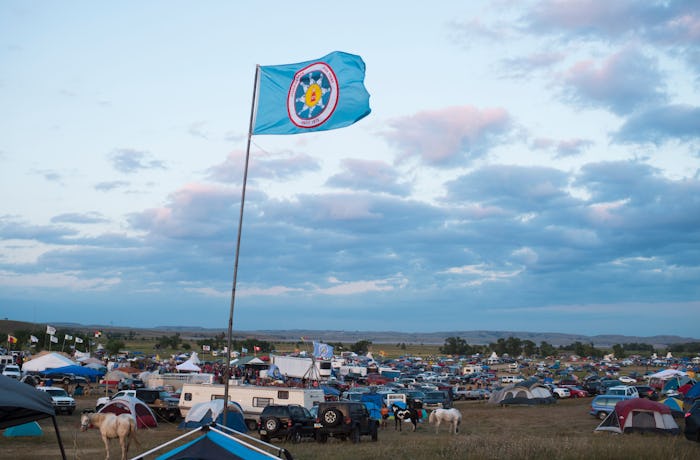News

What Everyone's Forgetting About Standing Rock & The DAPL Protests
Earlier this week, thousands of people checked into Standing Rock to show solidarity with Native Americans and allies currently protesting the Dakota Access Pipeline. While the check-ins brought great attention to the cause, there is still a lot that people are overlooking. At the end of the day, what everyone's forgetting about Standing Rock and the DAPL protests is that it is not the environment — its about protecting the rights of a group who was on that land long before many of us.
Yes, the Dakota Access Pipeline is — at its surface — about the environment. The DAPL, according to CNN, is an oil pipeline that will span from Illinois to North Dakota and the states in between. But it isn't just any other ordinary pipeline — according to CNN, 7.4 billion barrels of undiscovered oil is proven to be in the region where the pipeline will be put down. This is something that many people already know. But beyond the surface of the DAPL, there is another part that people keep forgetting. A portion of the land that lies above the proposed pipeline belongs to the Standing Rock Sioux tribe. Somehow people seem to forget that this land is sacred to the Standing Rock Sioux tribe.
According to CNN, the construction of the DAPL will "destroy burial sites, prayer sites, and culturally significant artifacts," according to the Standing Rock Sioux tribe. While the pipeline is a threat to the environment in general, it is more specific to the Standing Rock Sioux tribe. According to NBC, the Standing Rock Sioux tribe believes that if an oil spill were to occur, it would "permanently contaminate the Missouri River" — a major water source for the reservation — and the construction of the pipeline will destroy the tribe's sacred land.
According to CNN, "38 miles of the Dakota Access Pipeline cuts through territory that still belongs to Native Americans, based on a 1851 treaty signed at Fort Laramie in Wyoming." The DAPL won't just effect the tribe's water supply — it directly effects the rights of Native Americans and, more specifically, the rights of the Standing Rock Sioux Tribe. The DAPL and Standing Rock Protests are about protecting these rights of the Native Americans and the land given to them hundreds of years ago. For too long the rights of Native Americans and their sacred lands have been erased from history. "It's about our rights as native people to this land. It's about our rights to worship. It's about our rights to be able to call a place home, and it's our rights to water," DAPL protestor Jessie Weahkee told NPR.
The DAPL protest and protest at Standing Rock is more than about the environment or crude oil — it is about the Native Americans and their right to have their voices, stifled by history in the past. These protests are the one of the ways for many Native Americans to finally have their voices heard.